This is the Trumpeter 05523 kit in 1/35 scale, of the ‘German 12.8 cm PaK 44 Waffenträger, Krupp 1’.
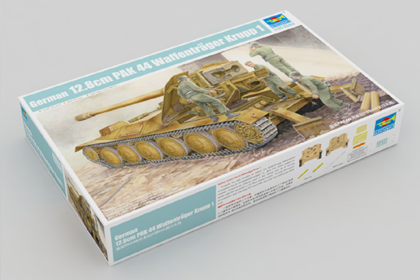
History
Manufacturer
Where I got it
- Stoppel Hobby (July 2014)
This is the Trumpeter 05523 kit in 1/35 scale, of the ‘German 12.8 cm PaK 44 Waffenträger, Krupp 1’.

This is the Trumpeter 01566 kit in 1/35 scale, of the ‘Russian Heavy Tank, KV-1S’.

In response to criticisms, the lighter KV-1S (Russian language: КВ-1С) was released, with thinner armour and a smaller, lower turret in order to reclaim some speed. Importantly, the KV-1S also had a commander’s cupola with all-around vision blocks, a first for a Soviet heavy tank.
However, the thinning-out of the armor called into question why the tank was being produced at all, when the T-34 could seemingly do everything the KV could do and much more cheaply. The Soviet heavy tank program was close to cancellation in mid-1943.
This is the Dragon 6352 kit in 1/35 scale, of the ‘German Panzerkampfwagen VI (P)’.
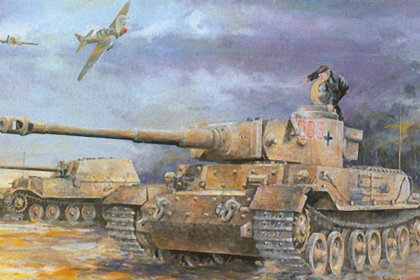
On the 21st May 1942, Henschel and Porsche at a meeting in Germany were asked to submit designs for a 45 ton heavy tank capable of mounting the high velocity 88mm KwK L/56 gun which was derived from the German 88mm FlaK gun. Both the Henschel and Porsche tanks were to be fitted with the same turret supplied by Krupp.
The Porsche company worked on updating the VK3001P medium tank, Porsche’s medium tank prototype, and adapted parts used on it for the new tank.
This is the Trumpeter 05573 kit in 1/35 scale, of the ‘Russian JS-4 Heavy Tank’.
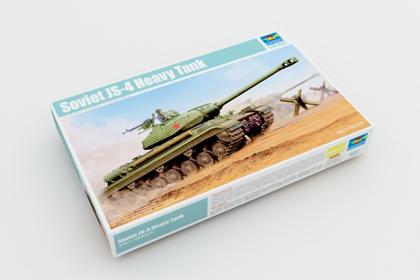
Several alternative armaments were explored in paper studies, although ultimately the IS-2’s original 122mm gun was retained. An effort was also made to make use of technical data derived from study of the German wartime Panzer V Panther tank, which influenced the layout of the IS-4’s engine cooling system.
The tank was approved for mass production in 1948 but due to disappointing speed and mobility only 200 were build. Most of these were transferred to the Russian Far East in 1950 in preparation for the planned Soviet intervention in the Korean War. When this operation was aborted the tanks nevertheless remained stationed in the region until their decommissioning in the 1960s.
This is the Trumpeter 00221 kit in 1/35 scale, of the ‘German Schwere Plattformwagen Type SSMYS 80 ton’.
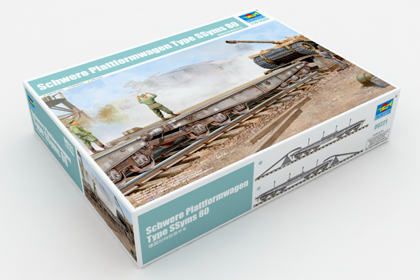
In the case of tanks, this got them closer to the battlefield faster than if they had been driven there under their own power. It also left the tank crews fresher for battle.
This particular SSYMS 80 ton, was used for carrying the Germany Panther and Tiger heavy tank.
This is the Trumpeter 05568 kit in 1/35 scale, of the ‘Russian SU-152, Late version’.

Later production used IS tank chassis and was re-designated as ISU-152. Because of its adopted role of as an impromptu heavy tank destroyer, capable of knocking out the heaviest German armoured vehicles — Tiger, Panther and Elefant tank destroyers—it was nicknamed Zveroboy, “beast killer”.
This is the Bronco 35057 kit in 1/35 scale, of the ‘German 2cm Flakvierling 38’.
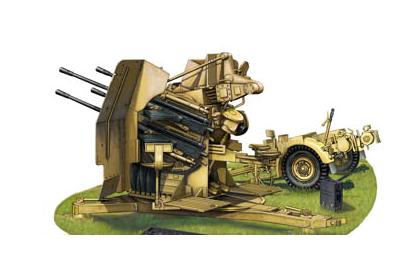
In 1940 the 2cm Flakvierling (quad mounting) 38 was officially adopted by the German army as its standard light anti-aircraft weapon. Mauser was made responsible for the development work and subsequent production of this variant. All four guns could be fired with a combined rate of fire of 800 rpm, or the weapons could be fired in pairs.
During the war it was used either vehicle mounted or on its familiar 4-gun Sd.Ah.52 towed carriage. As the war progressed, ammunition was developed for ground use against vehicles and ground works.
This is the Trumpeter 01517 kit in 1/35 scale, of the ‘German Railway Gondola’.
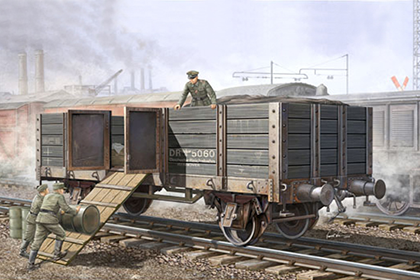
This is the Trumpeter 01518 kit in 1/35 scale, of the ‘German Railway Gondola – Lower sides’.

Half tracks, soft skin vehicles and light armor like the Marter III were seen on these cars. They were used throughout the span of the war. These cars were often sand bagged and used with AA units for Air cover.
This is the Bronco 35103 kit in 1/35 scale, of the ‘German Telemeter KDO Mod 40’.

Introduced by the German military in 1941 this small director was used by all three services and could be modified for use with almost any anti-aircraft weapon. In the field the director used a 5-man crew, two men are required to input azimuth and elevation data. A third man sets the slant range by means of a 4-meter stereo range finder which is mounted on top of the director. A fourth man sets the horizontal angle of approach, while the fifth man is a general operator. The time from first acquiring the target to firing the first round could be achieved in less than 30 seconds. The slant range could be up to 18,000 meters.
For transport the director is mounted on a Sd.Ah.52 special trailer, equipped with lifting devices, and towed by a light truck.